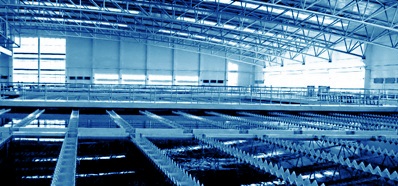Vacuum Pumps
Classification of Vacuum Pumps
Vacuum pumps are widely used in various systems and processes to create and maintain vacuum pressure. They are classified according to the principles of their operation, which helps engineers and researchers choose the most suitable type for specific tasks.
Based on the operating principle:
- Mechanical pumps: utilize mechanical components such as blades or pistons to create a vacuum and move gas from a low-pressure area to a high-pressure area. Examples include rotary pumps such as screw, roots, and centrifugal pumps.
- Displacement pumps: rely on gas condensation on the cooled element’s surface or its adsorption on the surface of a solid body. These include refrigeration machines and molecular pumps.
Based on purpose:
- General industrial pumps: used in various industrial processes such as vacuum distillation, gas removal, and packaging.
- High vacuum pumps: designed to create and maintain high vacuum levels, for example, in scientific research and semiconductor manufacturing.
- Specialty vacuum pumps: pumps specially designed for specific purposes such as medical technology, vacuum packaging of food products, and space technologies.
Based on construction:
- Piston pumps: use a piston to create a vacuum by changing the volume of the working chamber.
- Screw pumps: vacuum is created by the rotation of a screw inside a cylinder.
- Roots pumps: have two rotors rotating in opposite directions to create a gas flow.
- Centrifugal pumps: use centrifugal force to move gas through the rotor.
Based on technologies used:
- Oil pumps: gas is compressed and moved using oil.
- Dry pumps: do not require oil in the working space, making them more environmentally friendly and suitable for clean production environments.
- Liquid ring pumps: gas compression is achieved by the rotation of liquid forming a ring inside the pump.
The classification of vacuum pumps allows engineers and manufacturers to choose the appropriate type for specific applications, considering requirements for vacuum, operating conditions, energy consumption, and other parameters. Understanding different types of pumps and their operating principles is crucial for the effective design and operation of vacuum systems in various industrial sectors and scientific fields.
The operating principle
The operation principle of vacuum pumps is determined by their structural features and pumping methods. There are several types of devices:
- Gas-displacement pumps suction air through a pipe into the working chamber and then discharge it through a pressure outlet.
- Gas-absorption pumps retain gas outside or inside absorption components.
Gas-displacement devices can operate volumetrically or kinetically. The former cyclically move the flow from the suction area to the discharge section, while kinetic devices remove gas from the system and impart momentum to it, moving the medium towards the exit.
Gas-displacement equipment includes:
- Rotary vane pumps, which can be oil-lubricated or dry.
- Water ring pumps and units, which can be water-cooled or air-cooled.
- Turbomolecular pumps, which can work in conjunction with molecular pumps.
Gas-absorption equipment includes pumps such as:
- Cryogenic pumps, where air particles are deposited on surfaces as the working flow temperature decreases.
- Getter pumps, which bind gas molecules to the getter.
- Adsorption pumps, where air is absorbed upon cooling of the adsorbent and released upon heating from the working volume.
Purpose of Vacuum Pump
A vacuum pump is a device designed to remove gases or vapors to a certain pressure level known as technical vacuum.
Volumetric pumps perform pumping by periodically changing the volume of the working chamber. They are mainly used to obtain preliminary vacuum, known as fore-vacuum. This category includes piston, liquid-ring, and rotary pumps. Rotary pumps have gained the most popularity in vacuum technology.
Scheme of a rotary pump: 1, 3 – blades, 2 – casing.
High vacuum mechanical pumps include steam jet pumps (steam and oil), and turbo-molecular pumps. Molecular pumps remove gas by transferring gas molecules’ momentum from a solid, liquid, or vapor fast-moving surface. They include water-jet, ejector, diffusion molecular pumps with the same direction of movement of the pumping surface and gas molecules, as well as turbo-molecular pumps with mutually perpendicular movement of solid surfaces and pumped gas.
To achieve a certain degree of vacuum, appropriate pumps or their combinations are required. The choice of pump depends on the nature and volume of the gases passing through, the pump’s range of operating pressures, and its technical characteristics. There is no universal pump that could provide vacuum over the entire pressure range with high efficiency.
The company has capabilities to supply any pump equipment.



